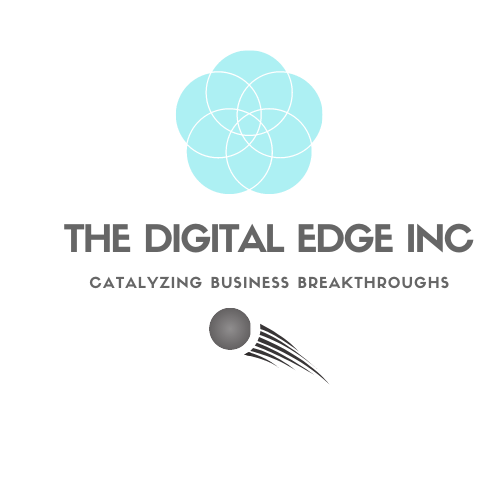Mastering the Future of Marketing: Actionable Steps to Get Leadership Buy-In

In today's rapidly evolving marketing landscape, staying ahead of future trends is crucial for your brand's success. Embrace data-driven insights and leverage ROI metrics to maintain a competitive edge. Securing leadership support is vital for the success of your marketing strategies. Ensure that your marketing goals are aligned with overarching business objectives to drive revenue growth. Utilize visual tools to effectively communicate complex ideas to leadership. Establishing goal alignment is key to securing buy-in. Brand marketing flourishes when leadership endorses innovative concepts. Implement actionable steps to gain leadership support and propel your brand into the future.
Understanding the Future of Marketing

Identifying Emerging Trends
Digital Transformation
Digital transformation reshapes the marketing landscape. Brands must embrace digital tools to stay competitive. Digital platforms offer new ways to engage with customers. Companies can leverage social media for direct communication. E-commerce platforms expand reach and sales opportunities. Businesses should invest in digital channels to enhance customer experiences.
Data-Driven Marketing
Data-driven marketing provides a competitive edge. Companies gain insights from collected customer data. These insights optimize marketing strategies. Businesses can identify effective marketing channels. Data-driven approaches improve campaign effectiveness. Precise customer segmentation becomes possible. Brands can tailor messages to specific audiences. This approach encourages brand loyalty and increases ROI.
The Impact of Technology
AI and Machine Learning
AI and machine learning revolutionize marketing. These technologies analyze vast amounts of data quickly. Businesses can predict customer behavior accurately. Personalized marketing campaigns become achievable. AI enhances customer interactions through chatbots. Machine learning optimizes ad targeting and content delivery. Companies should integrate AI into marketing strategies for better results.
Automation Tools
Automation tools streamline marketing processes. These tools save time and reduce manual tasks. Businesses can automate email marketing campaigns. Social media scheduling becomes efficient with automation. Automation ensures consistent customer engagement. Brands can focus on strategic planning and creativity. Investing in automation tools boosts productivity and effectiveness.
The Importance of Leadership Buy-In
Why Leadership Support Matters
Aligning Marketing Goals with Business Objectives
Leaders play a crucial role in aligning marketing goals with business objectives. A clear alignment ensures that marketing efforts contribute to overall company success. Leaders must understand the strategic importance of marketing initiatives. This understanding helps in setting priorities and allocating resources effectively. Successful alignment leads to increased efficiency and effectiveness in achieving desired outcomes.
Securing Resources and Budget
Leaders hold the key to securing necessary resources and budget for marketing strategies. Adequate funding allows marketing teams to execute plans without constraints. Leaders must recognize the value of investing in marketing to drive growth. A well-supported marketing team can explore innovative tactics and technologies. Leaders who provide resources enable marketers to deliver impactful results.
Challenges in Gaining Leadership Buy-In
Common Misconceptions
Leaders may have misconceptions about the value of marketing. Some leaders view marketing as an expense rather than an investment. These misconceptions hinder the support needed for successful campaigns. Leaders need education on the tangible benefits of marketing efforts. Clear communication helps dispel myths and build trust in marketing's potential.
Overcoming Resistance
Resistance from leaders can pose a challenge to gaining buy-in. Leaders may resist change due to fear of the unknown or past failures. Marketers must address these concerns with data-driven insights and case studies. Successful examples, like those from Explanatory Case Studies, demonstrate marketing's impact on growth. Leaders become more open to supporting marketing initiatives when they see proven results. Engaging leaders in the decision-making process fosters a sense of ownership and reduces resistance.
Actionable Steps to Secure Leadership Buy-In
Building a Strong Business Case
Demonstrating ROI
Showcasing the return on investment (ROI) is crucial for gaining leadership buy-in. Leaders want to see tangible benefits from marketing initiatives. Highlight the potential revenue growth and cost savings. Use clear data to illustrate how marketing efforts contribute to business objectives. Provide examples of successful campaigns with measurable outcomes. A strong ROI presentation convinces leaders of the value of marketing investments.
Presenting Data and Analytics
Data and analytics play a vital role in building a compelling business case. Use visual tools like charts and graphs to present complex data. Visual aids help leaders grasp the information quickly. Highlight key statistics that demonstrate the effectiveness of marketing strategies. Include insights from customer behavior analysis and market trends. Clear and concise data presentations build credibility and trust with leadership.
Effective Communication Strategies
Tailoring the Message to Leadership
Tailor your message to resonate with leadership priorities. Understand what matters most to executives, such as revenue growth or market expansion. Align marketing goals with these priorities to capture their attention. Use language that reflects the company's vision and mission. Avoid jargon and focus on clear, straightforward communication. A well-tailored message increases the likelihood of gaining leadership support.
Using Storytelling Techniques
Storytelling techniques can make your presentation more engaging. Share success stories from past marketing campaigns. Use narratives to illustrate how marketing initiatives have driven business success. Incorporate anecdotes that highlight customer experiences and brand loyalty. Stories create an emotional connection and make the information memorable. An effective storytelling approach captivates leadership and reinforces the importance of marketing efforts.
Engaging Leadership in the Process
Collaborative Planning
Involve leaders in the planning process to foster a sense of ownership. Schedule regular meetings to discuss marketing strategies and objectives. Encourage leaders to provide input and feedback. Collaborative planning ensures alignment between marketing and business goals. Leaders who feel involved are more likely to support marketing initiatives. A collaborative approach strengthens the relationship between marketing teams and leadership.
Regular Updates and Feedback
Provide regular updates to keep leadership informed about marketing progress. Share key performance indicators (KPIs) and campaign results. Use visual reports to present data clearly and concisely. Encourage leaders to offer feedback and suggestions. Regular communication builds trust and transparency. Keeping leaders informed and engaged increases their commitment to supporting marketing efforts.
Implementing Future Marketing Strategies

Setting Clear Objectives
Defining Success Metrics
Define success metrics to measure marketing effectiveness. Use metrics like conversion rates, customer acquisition costs, and return on investment. These metrics provide insights into campaign performance. Establish benchmarks by comparing your competitors’ marketing metrics. Identify areas for improvement by analyzing website traffic and social media engagement. Success metrics guide decision-making and strategy adjustments.
Aligning with Organizational Goals
Align marketing strategies with organizational goals to ensure success. Understand the company's vision and mission. Set marketing objectives that support business growth. Ensure marketing efforts contribute to revenue targets. Collaborate with leadership to define priorities. Goal alignment fosters a unified approach to achieving success.
Monitoring and Adjusting Strategies
Continuous Feedback Loops
Create continuous feedback loops to refine marketing strategies. Gather data from customer interactions and campaign results. Analyze feedback to identify strengths and weaknesses. Use insights to make informed adjustments. Implement changes promptly to enhance effectiveness. Continuous feedback ensures strategies remain relevant and impactful.
Adapting to Market Changes
Adapt to market changes to maintain a competitive edge. Monitor industry trends and consumer behavior. Stay informed about emerging technologies and tools. Adjust strategies to capitalize on new opportunities. Flexibility allows quick responses to market shifts. Adapting ensures marketing efforts align with evolving demands.
Celebrate Support Love Insightful
Marketing Leaders
Marketing Trends Report
Marketing leaders agree that staying informed about the latest trends is crucial. The MARKETING TRENDS REPORT provides valuable insights into emerging patterns. This report helps you understand the challenges marketing leaders expect to face. You can use this information to adapt your strategies effectively. Marketing executives rely on these reports to make informed decisions. Staying updated with the trends ensures your marketing plan remains relevant.
Expert Insights
Expert insights play a pivotal role in shaping successful marketing strategies. Kim Doyal, a digital marketing expert, emphasizes the importance of leveraging first-party data. You can deliver personalized messages that resonate with your audience by using segmentation strategies. Marketing leaders report social media as a significant platform for engagement. Understanding the goals of marketing leaders helps you align your efforts with industry standards. Expert insights guide you in overcoming the top challenges marketing leaders face.
Data-Driven Insights, ROI Metrics, Visual Tools, Goal Alignment, Business Objectives, Revenue Growth
Marketing Strategy
A robust marketing strategy relies on data-driven insights and ROI metrics. You must focus on aligning your goals with business objectives. Visual tools help convey complex data effectively. Marketing leaders expect clear communication of strategies to drive revenue growth. You should celebrate support from leadership by showcasing tangible results. Data-driven insights empower you to refine your approach continuously.
Top Role Marketing
The top role marketing plays in achieving business success cannot be overstated. You must address the top challenges marketing leaders face head-on. SEO metrics matter significantly in evaluating your online presence. Marketing leaders expect you to optimize your strategies for better visibility. The biggest challenges marketing leaders encounter include adapting to market changes. Your ability to navigate these challenges determines your success.
Leadership buy-in remains crucial for successful marketing initiatives. You must demonstrate the impact of marketing on business goals. Highlight key takeaways to earn executive support. Involve management in planning and address hesitations. Align marketing with sales and leadership to drive progress. Implement the actionable steps outlined to secure leadership backing. Stay proactive in adapting to marketing trends. Embrace data-driven insights for continuous improvement. Propel your brand forward by fostering a collaborative environment. Leadership support ensures marketing strategies thrive in a competitive landscape.

